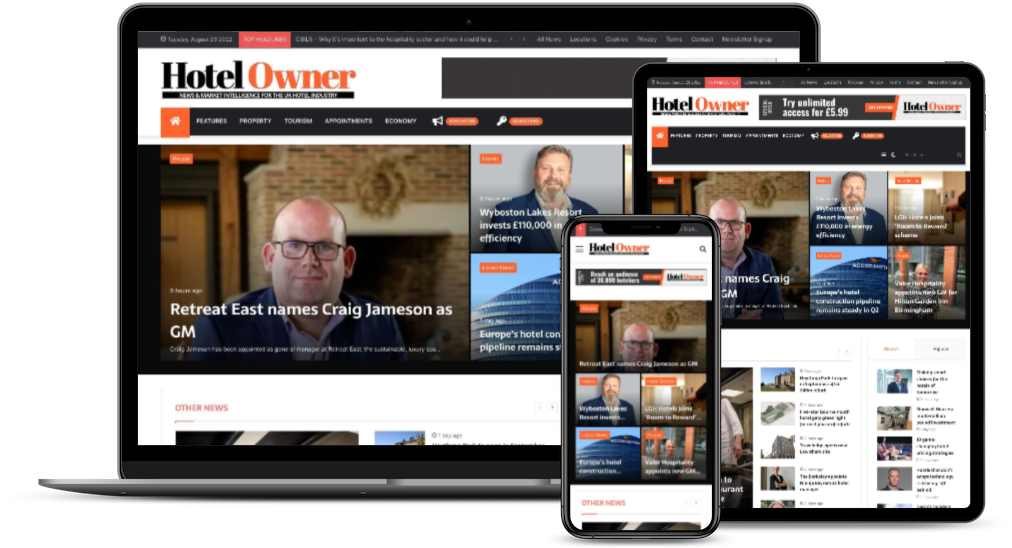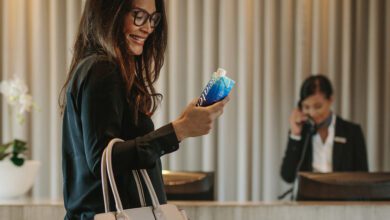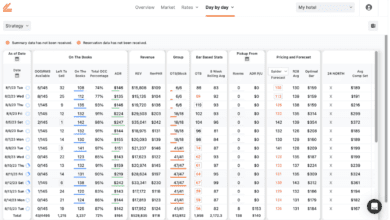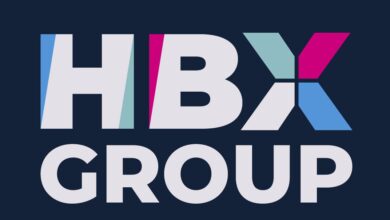How to drive five-star guest experiences with data
In this article, we unpack how European hospitality and travel brands can leverage data to meet the evolving demands of their customers

According to Deloitte, 39% of guests are likely to spend more on personalised experiences. For brands, this is significant as great experiences increase guest satisfaction and the likelihood that a customer will return.
Furthermore, 41% of guests say they tell friends and family about their great experience, which has the potential to increase revenue, brand loyalty and generate powerful, word-of-mouth marketing for a company. Meanwhile, a consumer survey by McKinsey notes that a customer’s perception of a travel company can be degraded if even one pain point in the customer journey is not satisfactorily resolved.
Yet, despite the value of getting personalisation right, many European travel and hospitality brands continue to struggle.
Let’s take a closer look at the hurdles these travel and hospitality brands are facing in the name of understanding their customer data:
– Messy Booking Data: The abundance of data collected by online travel agencies (OTAs), hotels, airlines and car rental services to name a few, poses a significant challenge. Connecting the dots and identifying the ownership of this data is a daunting task. As a result, personalisation often falls by the wayside, hindering the ability to understand and cater to individual preferences.
– Fractured Identities: Customers share inconsistent and diverse identifiers (like emails, phone numbers, zip codes and usernames) as they interact with brands from different channels, touchpoints and devices. The more a customer interacts, the more fragmented that identity becomes.
Systems that aren’t equipped with the right intelligence will fail to identify the fact that Business Traveler Joe and Vacation Joe are the same person with different loyalty accounts. Without an accurate, single view of the customer, brands run into downstream problems like poor personalisation and inaccurate insights.
– Siloed Data: Personalisation must be a holistic experience throughout the entire customer journey from online booking to customer service. However, the siloed nature of data and the lack of trust in its accuracy make it challenging to provide seamless personalisation at each touchpoint. Bridging these gaps requires a comprehensive understanding of the customer journey and the ability to infuse employee data, feedback and surveys into the personalisation process.
– Legacy Tools: Data Management Platforms (DMPs) are declining in effectiveness and efficacy. But the DMPs’ diminishing usefulness is not so much a problem with the technology itself; rather, it’s a reflection of the changing landscape where DMPs operate.
Data SOS: An urgent need for data intelligence
In today’s fast-paced digital landscape where customer loyalty is up for grabs, travel and hospitality brands don’t have the luxury of time to deal with legacy issues. They need fast, powerful and flexible Customer Data Platforms (CDPs) that can transform their end-to-end data management process in three major ways:
1. Fast and powerful identity resolution
2. Real-time access to 360-degree customer profiles
3. Data intelligence and campaign orchestration
Identity resolution is a crucial step in using customer data. All the other elements of personalising marketing and service depend on first having a clear, coherent record for each customer.
With effective data integration complete, travel and hospitality brands will want to have real-time access to the most up-to-date customer profiles. CDPs do that by providing them with an ‘always-on’ Customer 360, where users can easily retrieve the information they need.
Elevating the customer experience
Like many travel brands, this major airline had a problem unifying customer data that was siloed in systems for reservations, loyalty and its mobile app. As a result, it had issues personalising messages to drive pre-trip product adoption.
With the help of a CDP, the airline was finally able to pull all of its data together for the very first time. From there, it segmented its audiences based on attributes like route, aircraft type and cabin seating. Doing this enabled the prominent airline to create a dynamic, pre-trip journey orchestration, triggering up to four personalised messages per guest.
For this airline, having a CDP in place allowed it to deliver customer-centric journeys from pre-flight onwards, improving loyalty, retention and revenue growth as a result.
Orchestrating successful media campaigns to improve return on ad spend (ROAS)
When Wyndham Hotels & Resorts first deployed their CDP, they were surprised at how fast the system got up and running and started showing results. In less than three weeks, the hospitality brand had already gotten its marketing destinations set up, created its audience segments and applied them to its media strategies.
In some cases, the results were almost immediate. With accurate first-party data, they saw significant improvements in areas of lookalike audience and audience suppression, garnering double-digit increases in ROAs, click-through and conversion rates.
Getting onboard with personalisation: The future of travel and hospitality
By investing in robust data management systems, leveraging employee data and prioritising guest experience improvement, European travel and hospitality brands can make significant strides towards achieving true personalisation. Embracing the power of personalisation enables brands to create memorable travel experiences that leave a lasting impact on their customers, ultimately driving success in the evolving travel industry.
About the author: Matthew Lubeck, Vice President EMEA, Amperity
Matthew is the Vice President of EMEA where he is responsible for the commercial expansion of Amperity, a leading customer data platform trusted by brands like Reckitt, Under Armour and Wyndham Hotels & Resorts. Lubeck joined Amperity in 2017 to help launch the company and has served in a number of key roles building sales, customer success, and marketing functions. Matthew established Amperity’s LGBTQ employee resource group (ERG) and is a trusted advisor and customer-centricity change agent to the C-suite across leading consumer brands.
Prior to Amperity, Lubeck spent 10 years with global beauty conglomerates Estee Lauder Group and L’Oréal as Group Head of Customer Data Strategy and Analytics, leading 30 brands across luxury, mass and salon professional divisions to better use data & unlock incredible beauty experiences, establishing L’Oreal as an industry leader. He resides in London with his husband and four-year-old daughter.









